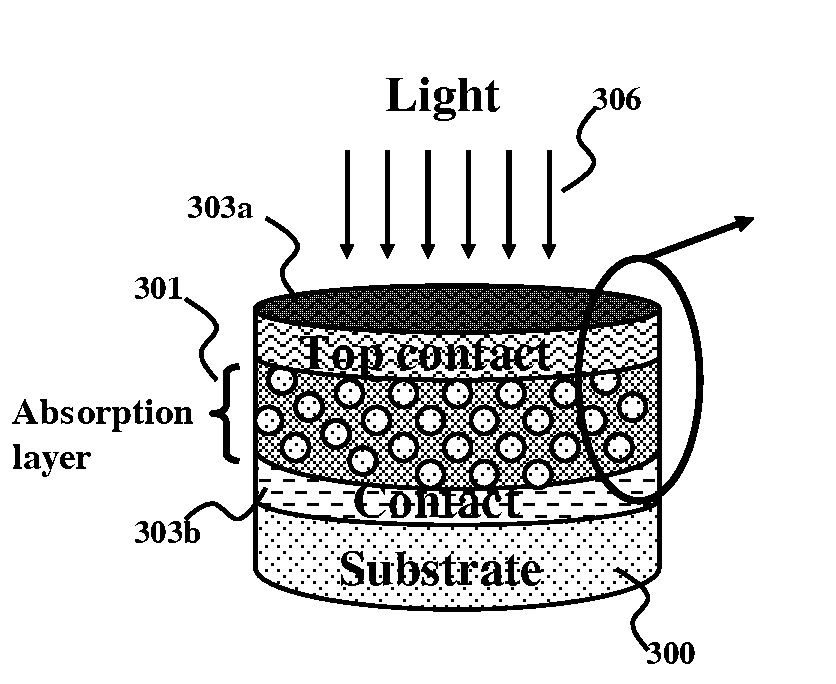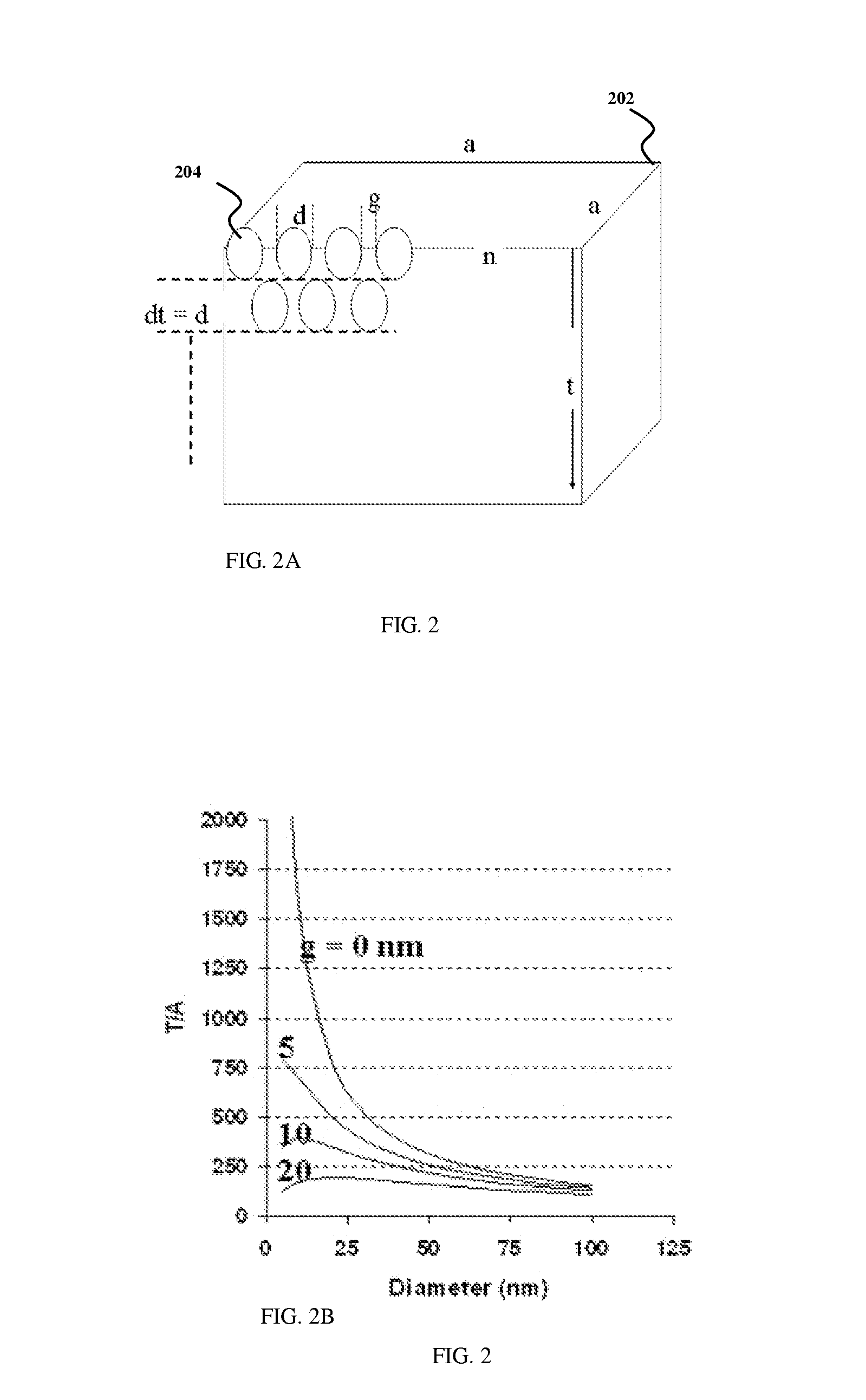High efficiency photovoltaic cells
a photovoltaic cell, high-efficiency technology, applied in the direction of basic electric elements, electrical equipment, semiconductor devices, etc., can solve the problems not yet widely accepted as an alternative energy source solution, and the toxic nature of these materials, and the effect of reducing the conversion efficiency
- Summary
- Abstract
- Description
- Claims
- Application Information
AI Technical Summary
Benefits of technology
Problems solved by technology
Method used
Image
Examples
Embodiment Construction
[0038] According to the present invention it is our object to provide several photovoltaic cell structures that increase the surface area, which would increase the junction area, and also cover a wide range of the solar spectrum in order to increase conversion efficiency to as high as >60%. Before proceeding to give the detailed explanation of the photovoltaic cell structures and their manufacturing, simulation results are given to show the benefits of increasing the surface area and using the nanoparticles in the photovoltaic cell.
[0039]FIGS. 2A and 2B are the schematics representing the layer 202 formed with the nanoparticles. The layer 202 represents the absorption layer in the photovoltaic cell. FIG. 2B shows the simulation results as function of the nanoparticle diameter dwith gap g between two nanoparticles as the parameter. In FIG. 2A, n×n number of nanoparticles are arranged in a×a sized layers with thickness t. T / A is the ratio of the surface area of the total nanoparticle...
PUM
 Login to View More
Login to View More Abstract
Description
Claims
Application Information
 Login to View More
Login to View More - R&D
- Intellectual Property
- Life Sciences
- Materials
- Tech Scout
- Unparalleled Data Quality
- Higher Quality Content
- 60% Fewer Hallucinations
Browse by: Latest US Patents, China's latest patents, Technical Efficacy Thesaurus, Application Domain, Technology Topic, Popular Technical Reports.
© 2025 PatSnap. All rights reserved.Legal|Privacy policy|Modern Slavery Act Transparency Statement|Sitemap|About US| Contact US: help@patsnap.com



